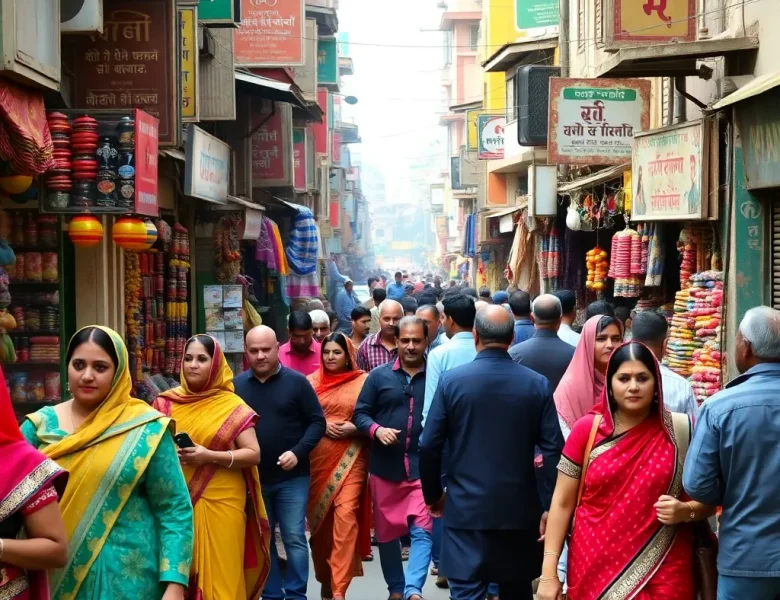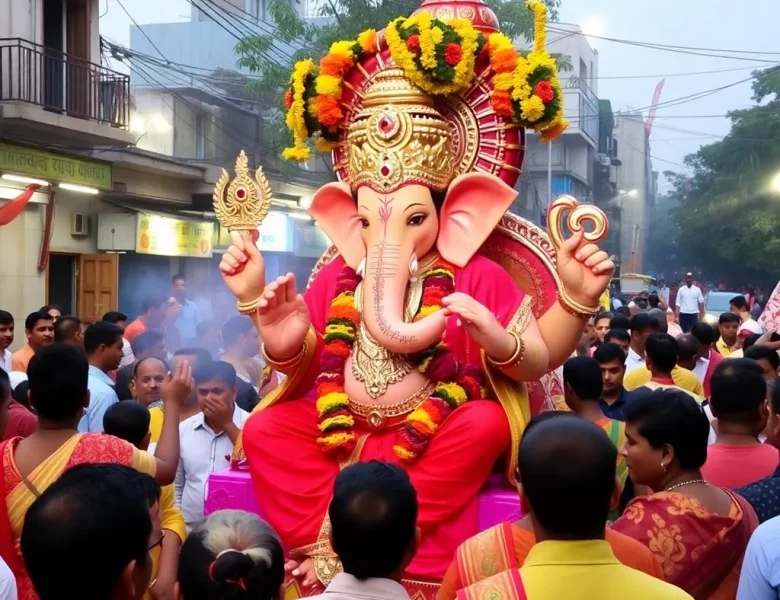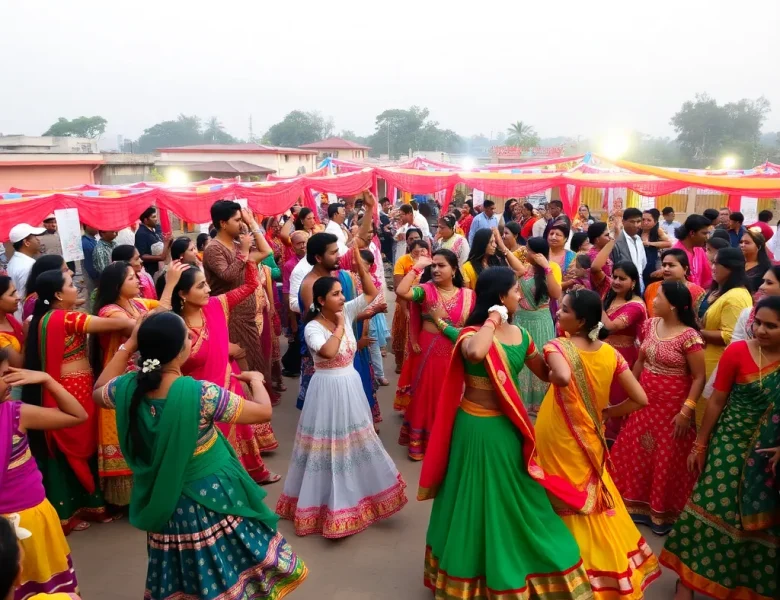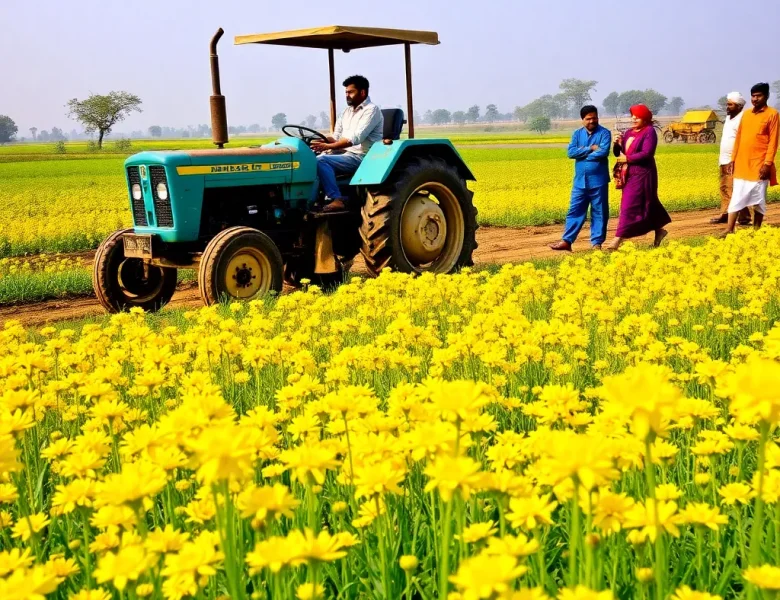Introduction
India is a land of diversity, not just in culture and tradition, but also in languages. With over a billion people and dozens of regional languages, reaching every audience in their native tongue has always been a challenge for businesses, educators, and content creators.
This is where Text-to-Speech (TTS) technology steps in. By converting written text into natural, human-like voices, TTS bridges the gap between communication and accessibility. Whether it’s Hindi for the heartland, Tamil for the south, or Bengali for the east, TTS is transforming how Indians learn, interact, and consume content.
In this blog, we’ll explore 12 major Indian languages where TTS is making the biggest impact, why each language matters, and how TTS helps bring people closer in the digital age.
Why Indian Language TTS Matters
Before diving into each language, let’s quickly understand why Indian language TTS is so important:
- Accessibility: Helps visually impaired and elderly users consume content easily.
- Education: Makes learning materials available in multiple languages for students.
- Business Reach: Companies can connect with customers in their local tongue.
- Cultural Preservation: Keeps regional languages alive in the digital space.
- Entertainment & Media: Powers audiobooks, podcasts, videos, and customer interactions.
Now, let’s explore each language individually.
1. Hindi Text-to-Speech: Powering Pan-India Communication & Content

Hindi is spoken by hundreds of millions across India and is the connective thread in many national conversations. A robust Hindi TTS engine does more than read text — it builds reach, trust, and access.
Why Hindi TTS matters: businesses, media houses, government services, and educators use Hindi audio to reach audiences who prefer listening or who have limited literacy. For news portals and YouTubers, Hindi voiceovers produce faster turnaround and scale across regional channels. For customer support, Hindi IVR systems and chatbots provide a local-feel experience that reduces abandonment rates.
Use cases:
- News & Media: Rapid conversion of written articles into Hindi audio for podcasts and daily briefs.
- Education: Hindi audio lessons for students in rural and semi-urban areas help retention.
- Customer Support: IVR systems and FAQs in Hindi reduce friction and lower service costs.
- Accessibility: Screen readers, audio narrations for the visually impaired.
Technical and quality considerations:
- Natural prosody: Hindi has rhythmic patterns and intonation; TTS must respect native stress patterns for natural-sounding speech.
- Compound words & sandhi: Hindi often joins words; good models must handle correct pronunciation after sandhi changes.
- Dialect coverage: North Indian Hindi dialects vary; choose TTS trained on a diverse corpus to avoid unnatural phrasing.
- Punctuation/TTS markup: Use punctuation and short sentences for better clarity; consider SSML (speech markup) support for pauses, emphasis, and breathing.
Importance of Hindi TTS:
- Government Communication: Digital platforms can broadcast policies and updates in Hindi audio.
- Entertainment: Audiobooks, podcasts, and YouTube channels become more accessible.
2. Bengali Text-to-Speech: Preserving Literary Richness, Scaling Education

Bengali is a language rich in literature and a strong regional media market. Bengali TTS helps publishers, educators, and brands transform text into audio while preserving the lyrical cadence that Bengali listeners expect.
Why it’s essential: Bengali readers value melodic narration. Whether it’s classic Tagore poetry or contemporary blogs, accurate intonation and clear pronunciation are crucial to retain impact. Bengali TTS enables audiobooks, localized e-learning, and radio-style content, expanding digital literacy and media reach.
Use cases:
- Audiobooks & Literature: Convert novels and poems into expressive audio that respects meter and pause.
- Local News & Podcasts: Faster production cycles for regional audio news and serialized storytelling.
- Education: Bengali TTS in language learning apps and course material improves comprehension.
- Govt & NGOs: Public service announcements and health advisories can be disseminated effectively via audio.
Technical challenges and tips:
- Poetic meter & rhythm: For poetry and lyrical prose, choose TTS with expressive control (emphasis and pitch modulation).
- Pronunciation of proper nouns: Bengali has many loanwords and names—custom dictionaries or pronunciation lexicons help.
- Handling sandhi and clusters: Ensure the TTS handles consonant clusters and inherent vowels accurately.
- SSML and emotional tags: Use emotional rendering and SSML where available to convey the right tone in literary readings.
Importance of Bengali TTS:
- Education: Perfect for e-learning platforms in West Bengal and Bangladesh.
- Media: Publishers can turn digital books into audiobooks easily.
- Cultural Reach: Makes Rabindra Sangeet, folk tales, and history available to younger generations digitally.
Bengali TTS ensures that the literary richness of Bengal remains accessible to everyone, everywhere.
Preview Voice:3. Marathi Text-to-Speech: Local Trust, Local Business, Local Content

Marathi is widely used in civic life and media across Maharashtra. Marathi TTS helps organizations produce trusted, local-language communications that resonate with both urban and rural audiences.
Use cases that deliver impact:
- Local Government & Civic Alerts: Voice updates for municipal services, election info, and health campaigns in Marathi ensure broader compliance and reach.
- Financial & Banking Services: IVR and transaction notifications in Marathi reduce customer friction and improve uptake of digital services.
- Education & Exams: Marathi audio for exam prep, local history lessons, and vocational training broadens access.
- Local Media & Podcasts: Marathi podcasts and narrated features help preserve local culture and news.
Technical and user considerations:
- Formality levels: Marathi registers range from highly formal to colloquial; the best TTS options offer style and tone controls.
- Compound verbs & suffixes: Marathi uses suffixes to indicate tense and politeness; TTS models should be trained on native speech datasets.
- Regional inflection: Dialects across Konkan, Vidarbha, and Marathwada differ; pick a TTS voice that sounds neutral yet authentic.
4. Tamil Text-to-Speech: Bridging Ancient Literature and Modern Learning

Tamil, one of the world’s oldest literatures, demands a TTS that can bridge classical cadences with modern speech patterns. Tamil TTS opens doors for education, cultural preservation, and accessible content.
Key applications:
- Classical texts & storytelling: Tamil has rich epics and temple literature; expressive TTS helps listeners connect with ancient themes.
- E-learning & universities: Tamil audio lectures make higher education more inclusive for native language learners.
- Voice assistants & IVR: Localized Tamil voice interfaces improve adoption of digital services in Tamil Nadu.
- Media & Film: Fast voice-over creation for trailers, synopses, and promotional material.
Important technical aspects:
- Phonemic richness: Tamil phonology includes retroflex and dental sounds—accuracy matters for intelligibility.
- Morphology handling: Agglutinative nature requires TTS to synthesize long word forms cleanly; morphological-aware tokenization helps.
- Poetic speech: For literature and devotional recitations, emotional and rhythmic control provides authenticity.
Importance of Tamil TTS:
- Cultural Preservation: Makes Sangam literature and folk stories more accessible.
- Education: Helps Tamil-medium schools adopt digital learning.
- Entertainment: Audiobooks and podcasts in Tamil expand rapidly.
Tamil TTS keeps the ancient language alive while making it modern and tech-friendly.
Preview Voice:5. Telugu Text-to-Speech: Fast Content, Deep Cultural Resonance

Spoken by 96 million people, Telugu is one of the most musical-sounding Indian languages. It dominates Andhra Pradesh and Telangana and has a massive diaspora worldwide.
Telugu’s cinematic and digital ecosystems are booming; Telugu TTS helps creators, newsrooms, and government outreach scale voice content quickly without losing the language’s musicality.
Primary use cases:
- Media & OTT: Quick narration and localized summaries for Telugu films and shows.
- Government notices: Telugu audio for public service announcements and local administrative updates.
- Education & Tutorials: Vocational and school content in Telugu improves comprehension.
- Voice-enabled apps: Local language chatbots and assistants drive regional adoption.
Technical focus:
- Pitch and prosody: Telugu is tonal in rhythmic use — good TTS must maintain natural pitch ranges.
- Regional accents: Distinguish between Andhra and Telangana speech nuances; aim for neutral clarity.
- Compound constructions: Telugu forms long verb suffixes; TTS models must manage joined morphemes.
Importance of Telugu TTS:
- Film Industry: Voiceovers for Tollywood cinema, YouTube, and OTT platforms.
- Education: Digital content in Telugu for rural and urban students.
- Healthcare & Support: Automated voice support for local services.
Telugu TTS bridges communication in one of India’s fastest-growing states.
Preview Voice:6. Kannada Text-to-Speech: Tech Adoption & Cultural Preservation

Kannada, spoken by 60+ million people, is Karnataka’s official language and is deeply tied to its cultural identity.
Karnataka’s tech hubs and rich performing arts make Kannada TTS a high-utility tool for both enterprise and culture.
Primary uses:
- IT & support desks: Kannada voice assistants for local customer support and troubleshooting.
- Performing arts: Yakshagana and classical storytelling can be archived with TTS narration for younger audiences.
- Education & civic tech: Kannada audio for civic announcements and school content increases engagement.
Technical considerations:
- Morphological complexity: Kannada agglutination requires careful tokenization and pronunciation modeling.
- Formal vs. colloquial registers: Provide voices tuned for government notices (formal) and social media (conversational).
Importance of Kannada TTS:
- Government Services: For wider communication across the state.
- Tourism: Guides and translations for non-native visitors.
- Education: Local students get access to study materials in their mother tongue.
Kannada TTS ensures technology respects local culture and inclusivity.
Preview Voice:7. Malayalam Text-to-Speech: Healthcare, Media & The Global Malayali Community

Spoken by 38 million people, Malayalam is Kerala’s language of literature, cinema, and tradition.
Malayalam speakers are distributed across Kerala and a vast global diaspora. Malayalam TTS is used heavily in healthcare, local media, and diaspora services.
Practical applications:
- Healthcare communications: Malayalam audio guides for patient instructions, pill schedules, and telemedicine.
- Media & cinema: Quick narration aids for trailers and news briefs.
- Diaspora services: NRIs use Malayalam audio for news and community updates, keeping cultural ties alive.
- Education & literacy: Audio textbooks and exam prep materials for students in Kerala.
Technical considerations:
- Complex consonant clusters: Malayalam orthography features conjunct forms that TTS must normalize to spoken syllables.
- Prosodic control: For scripting devotional and literary content, nuanced pitch control increases authenticity.
- Multimodal integration: Combine TTS with subtitles for videos to create bilingual content easily.
Importance of Malayalam TTS:
- Healthcare: Hospitals use TTS for patient information.
- Education: Helps in teaching students and providing audiobooks.
- Business Reach: Supports banks and customer care services in Kerala.
Malayalam TTS helps in breaking language silos in a state with high literacy.
Preview Voice:8. Gujarati Text-to-Speech: Commerce, Diaspora, and Digital Storytelling

Gujarati’s commercial networks and diaspora make Gujarati TTS valuable for businesses and culture-driven content alike.
How Gujarati TTS is used:
- Business communications: Trade, billing, and customer support in Gujarati strengthen local trust.
- Diaspora engagement: NRIs use Gujarati audio for news, religious content, and community updates.
- Tourism & heritage: Museum audio guides and temple narrations in Gujarati enhance cultural tourism.
- Education: Gujarati medium schools and adult literacy programs benefit from audio resources.
Technical notes:
- Vowel harmony & retroflex sounds: Accurate phoneme modeling prevents unnatural speech.
- Pacing: Adjust pacing for instructional content versus storytelling.
- Personalization: Allow for dialect selection (Saurashtra, Kathiawar) if possible.
Gujarati TTS ensures language and commerce go hand-in-hand.
Preview Voice:9. Punjabi Text-to-Speech: Farming, Faith & Entertainment

Punjabi is a powerful language for agriculture-focused services and cultural content. Punjabi TTS can provide practical information quickly and respectfully.
Top use cases:
- Agricultural advisory: Voice alerts about weather, mandi prices, and crop tips delivered in Punjabi help farmers make timely decisions.
- Religious content: Gurbani recitations, karaoke-style renditions, and devotional tracks benefit from accurate, respectful TTS.
- Media & music: Punjabi-heavy musical and entertainment content adapts well to TTS for promos and social clips.
- Education & outreach: Literacy programs and vocational training can be audio-supported in Punjabi.
Technical notes:
- Tone & intonation: Punjabi uses emphatic sounds; dynamic range in TTS helps preserve musical quality.
- Name pronunciations: Punjabi has many unique names and terminology; use custom lexicons for accuracy.
- Dialect options: Majhi (standard), Doabi, Malwai variations exist — consider neutral vs. regional voice options.
Importance of Punjabi TTS:
- Music Industry: Helps in creating AI-driven Punjabi songs and podcasts.
- Education: Assists schools and e-learning in Punjab.
- Diaspora Engagement: NRIs connect to their roots via Punjabi audiobooks.
Punjabi TTS makes sure the vibrant culture of Punjab thrives globally.
Preview Voice:10. Urdu Text-to-Speech: Poetry, News, and Heritage

Spoken by 50 million Indians, Urdu is known for its poetry, literature, and cultural richness.
Urdu’s poetic tradition makes expressive TTS especially valuable. Urdu TTS is used by media, literature platforms, and cultural institutions.
Key applications:
- Literary audio: Ghazals, nazms, and Urdu prose gain new listeners via spoken-word audio.
- News & briefings: Real-time Urdu audio for news services reaches radio-oriented audiences.
- Cultural preservation: Oral histories and Sufi poetry are ideal candidates for high-quality TTS.
- Education: Urdu-medium schools and adult literacy programs.
Technical points:
- Script complexity: Handle Urdu script normalization and diacritics to produce accurate phonetics.
- Expressivity: Emphasize emotional rendering support to capture poetic cadences and rhetorical flourishes.
- Dialects and influence: Urdu borrows heavily from Persian and Arabic; lexicon expansion helps with loanwords.
11. Text-to-Speech in Odia: Empowering Odisha’s Digital Voice

Odia, spoken by over 35 million people, is the official language of Odisha and one of the oldest languages in India, with a rich literary heritage that dates back more than 1,500 years. Recognized as a classical language, Odia carries immense cultural and historical value, with epic poems, devotional literature, and folk traditions forming its foundation.
Digital Growth in Odisha
Odisha has seen rapid improvements in digital infrastructure, especially in education and governance. The state is adopting e-learning platforms, mobile apps, and government portals to reach more people. However, much of this content is still available in English, limiting accessibility for many Odia speakers in rural areas.
Role of TTS in Odia
Odia Text-to-Speech bridges this gap by:
- Providing e-learning in Odia so students can listen to lessons instead of struggling with English text.
- Supporting government schemes through automated voice announcements and IVR systems in Odia.
- Enabling content creators to produce Odia voiceovers for videos, podcasts, and audiobooks without needing professional voice artists.
- Helping people with disabilities, particularly the visually impaired, by giving them access to written Odia content in spoken form.
Importance of Odia TTS:
- Cultural Preservation: Folk tales and religious texts can be digitized.
- Education: Local students can learn through Odia audio.
- Tourism: Helps in serving visitors in Jagannath Temple and Odisha heritage sites.
Odia TTS makes heritage-rich Odisha accessible to the modern digital era.
12. Text-to-Speech in Assamese: Bridging the Digital Gap in Northeast India

The Significance of Assamese
Assamese, or Asamiya, is the primary language spoken in Assam and parts of Northeast India. With over 15 million speakers, it is deeply tied to the cultural identity of the region, enriched by centuries of literature, folk songs (Bihu Geet), and traditional art forms. Assamese also plays an important role in connecting multiple ethnic groups across the state, making it both a cultural and communicative bridge.
Growing Digital Adoption in Assam
In recent years, Assam has seen a surge in smartphone and internet penetration, especially among the younger population. This has opened new opportunities for e-learning, digital content, and social media. However, most online content is dominated by English and Hindi, leaving Assamese speakers with limited local-language access.
How TTS is Helping Assamese Speakers
Text-to-Speech (TTS) technology is enabling Assamese speakers to access the digital world more easily. With natural-sounding Assamese voices, TTS tools make it possible to:
- Convert educational materials into audio for rural students.
- Assist visually impaired users by reading Assamese websites, e-books, and PDFs.
- Support creators in generating Assamese podcasts, audiobooks, and YouTube content.
- Help businesses and government bodies reach people with voice-based announcements in Assamese.
Future of Assamese TTS
With initiatives promoting local languages, Assamese TTS is poised to become essential in digital education, regional media, and government communication. As AI voices become more natural, Assamese speakers will enjoy content accessibility at par with global languages, ensuring the language thrives online.
📊 Benefits of Indian Language TTS
- Multilingual Reach: Businesses can communicate across India.
- Education Equality: Students get equal access regardless of language.
- Accessibility: Helps differently-abled and elderly people.
- Cultural Impact: Preserves India’s diverse linguistic heritage.
FAQs
Q1. Why is Indian language TTS important?
Because India is multilingual, and TTS ensures inclusivity by breaking barriers between people and content.
Q2. Can businesses use Indian TTS for customer support?
Yes, many businesses already use Hindi, Marathi, and Tamil TTS for IVR systems and support bots.
Q3. Is TTS available in all 12 major Indian languages?
Yes, platforms like Speakatoo support Assamese, Odia, Hindi, Tamil, Telugu, Bengali, Gujarati, Marathi, Malayalam, Punjabi, Kannada, and Urdu.
Q4. Does TTS help in education?
Absolutely! From school lessons to competitive exams, TTS in Indian languages makes learning easier.
Q5. Can I use Indian language TTS for YouTube and podcasts?
Yes, TTS helps creators generate multilingual voiceovers for videos, podcasts, and audiobooks.
Final Thoughts
India’s diversity is its strength, and Text-to-Speech technology ensures no voice is left unheard. From Hindi’s mass appeal to Assamese’s cultural roots, TTS empowers people, businesses, and educators to connect beyond barriers.
If you’re looking to create content in any Indian language, platforms like Speakatoo make it simple, fast, and natural-sounding.
👉 With TTS in 12 major Indian languages, the future of communication in India is multilingual, inclusive, and limitless.
